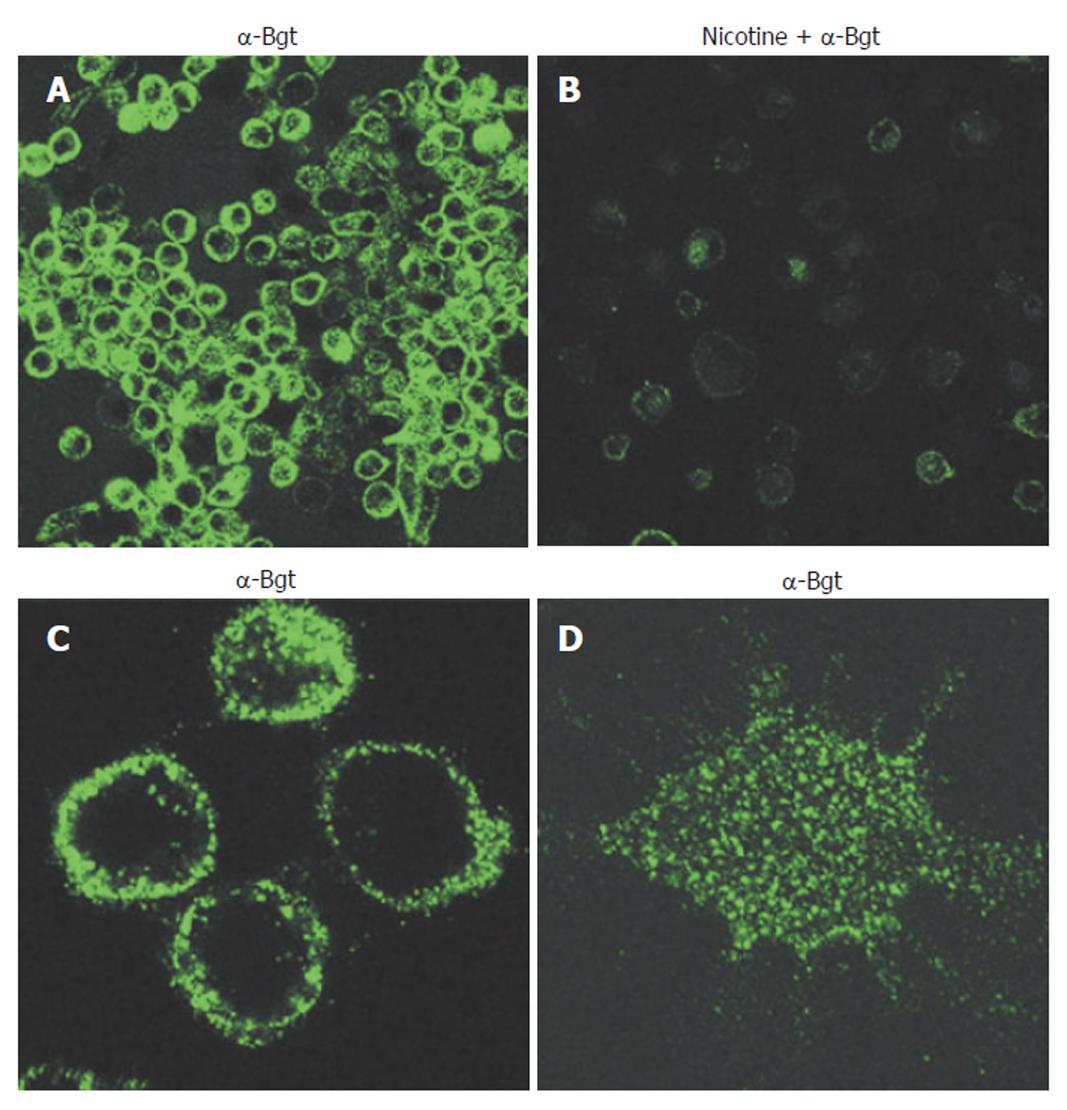Copyright
©2006 Baishideng Publishing Group Co.
World J Gastroenterol. Dec 14, 2006; 12(46): 7451-7459
Published online Dec 14, 2006. doi: 10.3748/wjg.v12.i46.7451
Published online Dec 14, 2006. doi: 10.3748/wjg.v12.i46.7451
Figure 1 α-Bungarotoxin-binding nicotinic receptors are clustered on the surface of macrophages.
Primary human macrophages were stained with fluorescein isothiocyanate (FITC)-labelled α-bungarotoxin (1.5 μg /mL) and viewed by fluorescent confocal microscopy. A: Cells were stained with α-bungarotoxin alone; B: Nicotine was added to a final concentration of 500 μmol before addition of α-bungarotoxin. C, D: Higher magnification reveals receptor clusters. C: Focus planes are on the inside layers close to the middle (three lower cells) or close to the surface (upper cell) of cells; D: Focus plane is on the surface of the cell. Magnifications: A, B, x 50; C, x 200; D, x 450.
- Citation: Scott DA, Martin M. Exploitation of the nicotinic anti-inflammatory pathway for the treatment of epithelial inflammatory diseases. World J Gastroenterol 2006; 12(46): 7451-7459
- URL: https://www.wjgnet.com/1007-9327/full/v12/i46/7451.htm
- DOI: https://dx.doi.org/10.3748/wjg.v12.i46.7451









